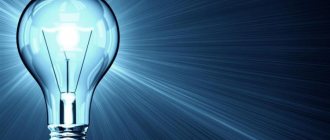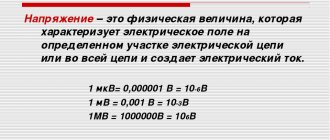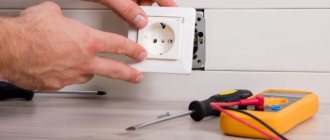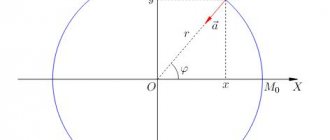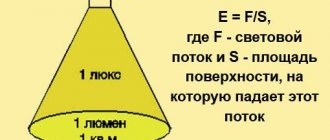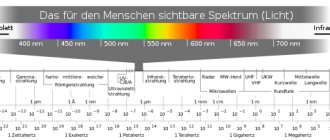Exposure number
The same photo with different exposure numbers
Exposure Value (EV) is an integer characterizing possible combinations of shutter speed and aperture in a photo, film or video camera. All combinations of shutter speed and aperture that expose the same amount of light to the film or sensor have the same exposure number.
Several combinations of shutter speed and aperture in the camera at the same exposure number allow you to obtain an image of approximately the same density. However, the images will be different. This is due to the fact that at different aperture values, the depth of the imaged space will be different; at different shutter speeds, the image will remain on the film or matrix for different times, as a result of which it will be blurred to varying degrees or not blurred at all. For example, the combinations f/22 - 1/30 and f/2.8 - 1/2000 are characterized by the same exposure number, but the first image will have a large depth of field and may be blurry, and the second will have a shallow depth of field and, quite possibly , will not be blurry at all.
In the left photo, due to the long shutter speed, the movement of the water is emphasized, while in the right photo, due to the relatively short shutter speed, the movement is not so noticeable and the water is depicted sharply
Higher EV values are used when the subject is better lit. For example, an exposure value (at ISO 100) of EV100 = 13 can be used when shooting landscapes if the sky is cloudy, and EV100 = –4 is suitable for shooting bright aurora.
A-priory,
EV = log2 (N2/t)
or
2EV = N2/t, (1)
- Where
- N - aperture number (for example: 2; 2.8; 4; 5.6, etc.)
- t - shutter speed in seconds (for example: 30, 4, 2, 1, 1/2, 1/4, 1/30, 1/100, etc.)
Dependence of depth of field on aperture value at the same exposure number
For example, for a combination of f/2 and 1/30, the exposure number
EV = log2(22/(1/30)) = log2(22 × 30) = 6.9 ≈ 7.
This number can be used to shoot night scenes and illuminated storefronts. Combining f/5.6 with a shutter speed of 1/250 gives the exposure number
EV = log2 (5.62/(1/250)) = log2 (5.62 × 250) = log2 (7840) = 12.93 ≈ 13,
which can be used to shoot a landscape with a cloudy sky and no shadows.
It should be noted that the argument of the logarithmic function must be dimensionless. In determining the exposure number EV, the dimension of the denominator in formula (1) is ignored and only the numerical value of the shutter speed in seconds is used.
The same exposure number 12 is installed on a Zenit-ET film camera and a Canon 5D Mark II digital camera
Measurement methods
The actual illumination of a room is measured using special instruments, which usually include an exposure meter or exposure meter, as well as a lux meter (photometer). The main tool used in everyday measurement of illumination (both natural and artificial) is a lux meter.
Such devices, in turn, are divided into analog and digital, and the first of them are outdated models, so they are used to measure illumination quite rarely.
Dial meter
Modern digital and pointer devices are usually used in the following situations:
- If necessary, certification verification of places of permanent work;
- To compare current illumination indicators with standardized parameters (when installing lighting devices, in particular);
- When checking the current level of illumination to the standards established by GOST.
The operation of a lux meter is based on the simplest principle, according to which a sensitive sensor (photocell) is built into it. When a light flux hits this element, a powerful electron flow is generated in it, the result of which is an electric current.
Important! The strength of this current is directly proportional to the amount of light entering the photocell.
It is this parameter (the amount of light per unit area) that is displayed on the meter display.
Digital light meter
What is lighting
Light is a type of electromagnetic vibrational motion. It differs from radio and electrical waves in that their length is much shorter. Particles (quanta and photons) emit these light streams in portions. When they hit the human eye, the optic nerve converts them into sensations (brightness and color, converted into an image).
General room lighting
There are two types of lighting:
- Natural, the source of which is radiation from the Sun;
- Artificial, produced by various special devices and installations.
These types of lighting are combined, and many other classifications are created based on them. Among the most famous of them are the following:
- General – creates a level of illumination sufficient for a person to stay comfortably in the room;
- Zonal - affecting a specific area (zone) of the room and providing an increased level of light in it;
- Local – designed to highlight an object and the space around it (keyboard, reading space, desktop);
- Decorative - has become popular relatively recently and is used to decorate certain interior solutions and to increase comfort;
- Emergency - switched on in production and enterprises during an emergency when conventional electrical installations cease to function normally.
You may be interested in this Determination of short circuit current
Important! In turn, these types can be divided into other, smaller categories depending on functional features and requirements.
Example of emergency lighting
Calculation requirements
There are certain requirements that must be taken into account when calculating lighting standards for industrial premises (tables and rules are available in industry SNiPs). Which ones exactly:
- The main requirement is the uniformity of the incident light flux. Here it is important to ensure that the room is evenly illuminated to the farthest corners. Therefore, it is necessary to take into account the color of walls, floors and ceilings. Light colors are considered to have higher reflectance. Therefore, it is easiest to achieve functional lighting with light walls and ceilings. In order not to be unfounded, we suggest that you familiarize yourself with the table, which clearly shows which color has which reflectance.
- It is very important that there are no shadows in production areas, especially moving ones. It has been proven that this is the cause of frequent injuries.
- There should be no reflective surfaces in workshops.
- It is very important that the light sources used in production do not interfere with color reproduction.
- And, of course, the light flux itself must be stable.
- Let's not forget about safety. That is, any lamp must work properly and pass the necessary tests.
How to measure illumination with an exposure meter?
Yes, very simple. I will explain using the example of my Leningrad.
This particular device has 3 EV scales with ranges: 5-12, 12-18 and 1-5 (at the bottom of the device). The second one is the main one, it is always “by default”. The rest are switched by levers on the body, which simultaneously open and move the photocell inside for the corresponding measurements.
With an external exposure meter, measurements are carried out in two ways :
1 . Brightness is a measurement of reflected light. The device is pointed at the object whose illumination needs to be determined and the readings are recorded.
2. By illumination - measurement of incident light. The device is placed in close proximity to the object and directed towards the camera (in our case, towards the light source). Typically, for this type of measurement you need to wear a milk filter that comes with the light meter.
There is a lot written about the pros and cons of each method for photography (for example, on the wiki), but for our purposes there is no particularly significant difference; you can choose the most convenient one for a particular case (or even both for greater accuracy). However, measurements with a lux meter (and most modern exposure meters) are always made using the second method.
Whichever method you choose, the result must be looked for on the EV . If the arrow goes beyond the scale, you need to switch to another one. And using the obtained EV value, find out in the table the corresponding lux value. If EV turns out to be fractional (for example, 3.5), then you can calculate the exact lux value using the above formula, or at least roughly estimate the range.
But not all exposure meters can show EV. In this case, the measurement becomes a little more complicated. First you need to set the ISO value to 100 (this makes it easier to count and check). For Soviet devices, this is the GOST window and position 90 (or immediately 100, depending on the device).
Then determine the shutter speed . In Leningrad, for this you need to set the rotary ring (2) to the value shown by the arrow on the lower scale (1). The upper scale of the ring (3) will show possible shutter speed/aperture pairs - choose to your taste. Other light meters work in a similar way.
Now you will need a diagram from an excellent flash resource, impulsite.ru. There are many tables and graphs on the Internet comparing shutter speed, aperture and EV, but this one immediately shows the values in lux (though rounded to the nearest whole number).
It is very simple to use: find the intersection of the aperture line and the shutter speed columns (shown by green arrows), then from this intersection diagonally find the EV and its corresponding value in lux (blue line). If desired, you can use the resulting EV value to calculate lux using the formula (see above). Actually, using the same table you can select an exposure pair if the illumination in lux is known.
Optimal parameter value for the workplace
Workplace lighting requirements are determined by a number of parameters. Key lighting requirements:
- The brightness should be adjusted in such a way as not to create problems with the human visual organs. It should not be weak so that the employee does not have to strain his eyes, but it should not be blinding, which will make it impossible to work.
- The illumination should be uniform. An employee should not suffer from an excess of unfortunate shadows. If the base light is not enough to eliminate them, then you need to connect auxiliary light sources. For example, a table lamp.
- The perception of light can be individual, so it is important to leave the employee the opportunity to independently debug some parameters that will provide him with a comfortable perception of light and productive performance.
Insufficient lighting and failure to comply with these requirements when organizing the workplace will lead to deterioration in the vision of employees in the office or other premises, a decrease in work efficiency and poor achievement of company goals. If some employees have pre-existing vision problems, they may need to provide additional accommodations to enable them to work effectively.
Two types of light are used in everyday life: natural and artificial. A combination of these types is considered optimal. This combination is called a combined (mixed) option.
Organizing a comfortable workplace
Depending on the working conditions, the following standards are determined:
- a small office requires average light of at least 500 lux;
- open space is standardized to at least 750 lux;
- conference room - 300 lux;
- reception room, secretariat - 300-500 lux;
- rooms with computer equipment - 400 lux;
- technical premises and corridors - 100-200 lux;
- archive room - 75 lux.
If employees work at a computer, then it is imperative to regulate breaks in their activities. Failure to comply with the rule will negatively affect their health and productivity. During the day, employees can work without breaks for no more than 2 hours, at night - no more than an hour. Every employee must take a break from work for up to fifteen minutes. This will create the necessary conditions for your eyes to rest. In addition, it is useful to do exercises to relax your eyes. But the latter measure is not mandatory; it is only recommended.
Visual comfort factors
Workplace lighting requires taking into account several factors. These factors include the following:
- color interior of the room. It is best to use light, green or yellowish shades, as they have a positive effect on vision. Such shades are more gentle and do not require excessive strain on the visual organs;
- adjusted brightness and contrast;
- light uniformity;
- eliminating glare and flickering from surfaces (for example, a monitor screen).
All these factors affect light, along with it comfort, the degree of fatigue and relaxation of the eyes. It is necessary to select the right lamp and organize the most comfortable conditions for employees both in terms of outdoor and indoor use (organize emergency lighting, general lighting, etc.).
Selecting lamps for workplace lighting
LED lamps will give the workplace a suitable parameter value. In addition to fulfilling the central task, they have the following advantages:
- low cost;
- long period of operation;
- low power consumption.
Second place can be given to halogen lamps. But when purchasing them, it is worth considering that they have a high degree of heating and it will not be possible to integrate them into any devices.
In third place is a fluorescent lamp; it can also be used, but its light is much worse (it is unnatural).
It is best to combine options and purchase auxiliary light (special electrical installation, etc.).
Lighting workplaces requires choosing the appropriate type of lamp; also pay attention to the location of the lamp, thanks to which the work area is illuminated. This determines how successful the chosen option will be. An incorrectly positioned lamp will lead to eye fatigue and poor vision, while a correctly positioned lamp will help you perform your job successfully.
